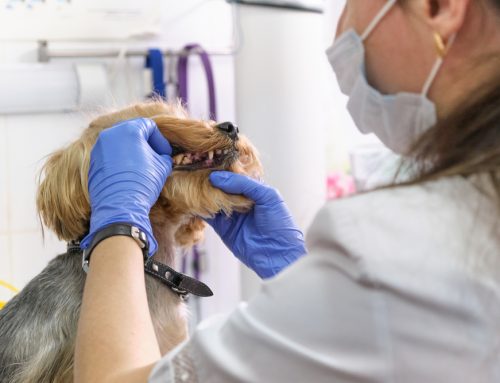Allergies can make pets miserable with itching, scratching, head shaking, and incessant licking. The pet’s owner is often also miserable from being woken up by her scratching pet and losing sleep, and worrying about the pet’s quality of life. Fortunately, allergy management for pets is usually not difficult. We answer five questions pet owners ask about allergies in pets.
#1: What is an allergy in pets?
An allergy is defined as a hypersensitivity to a substance, called an allergen. An allergic reaction occurs when the pet is exposed to a substance that her immune system misidentifies as dangerous. Once that substance has been identified as an invader, the pet will react every time she eats, or her skin contacts, the allergen.
#2: What causes allergic reactions in dogs and cats?
There are two types of allergies in pets—environmental and food. Environmental causes are the most common in dogs, with up to 10% of all dogs experiencing symptoms. Most environmental allergies are caused by:
- Dust mites
- Pollen
- Mold
- Dander
Food allergies are caused when something the pet has eaten reacts inside her gastrointestinal (GI) tract. Cats are more prone to food allergies than dogs. Common food allergies in pets include:
- Dogs and cats:
- Beef
- Chicken
- Milk
- Dogs only:
- Eggs
- Corn
- Wheat
- Soy
- Cats only:
- Fish
#3: What are allergy signs in dogs and cats?
In dogs, environmental allergies usually manifest on the skin of their feet, face, ears, elbows, armpits, and abdomen, which can become red and itchy, and often bumpy. A dog with food allergies may vomit an hour or two after eating, lose weight, and have soft stools and a poor hair coat.
Cats are more likely than dogs to have food allergies, which usually manifest on the skin. Allergic cats will often scratch so much that they lose patches of hair, and can create wounds with scabs that can be localized, or across the whole body.
#4: How can I tell which allergies my pet has?
If you are concerned that your pet may have allergies, you should make an appointment with our veterinary team. We will need to perform a thorough physical exam on your pet, particularly her skin, take a complete history, and possibly perform skin tests and dietary trials, to help determine whether your pet may have food or environmental allergies, and the source of her allergies. We may recommend additional testing to rule out other allergy causes, such as fleas, mites, or ear infection.
#5: How are allergies treated?
- Environmental allergies — The best way to manage environmental allergies is by avoiding or restricting allergen exposure, which can be difficult, or impossible. We may prescribe medication or a therapeutic shampoo, and then skin tests and allergy shots if symptomatic management does not help.
- Food allergies — Food allergies can be more easily managed than environmental allergies, although determining an appropriate diet may require several diet trials and many months. Diet trials are a process of elimination, where your pet is prescribed a food that has no ingredients she has previously eaten, and eats nothing else, including treats and chews, for a minimum of three months.

If your pet’s allergy signs disappear, we may recommend a food challenge to confirm the results. A food trial can involve trying one ingredient at a time, or feeding her previous diet to see if her signs return. Once we can confirm which food causes her allergy, her diet will need to be strictly controlled for the rest of her life.
Springtime brings not only new blossoms and pollen, but also causes environmental allergies in pets. Allergies, whether environmental or food, can make life miserable for pets and people, so make an appointment at our clinic if you suspect your pet is suffering from allergies.







Leave A Comment